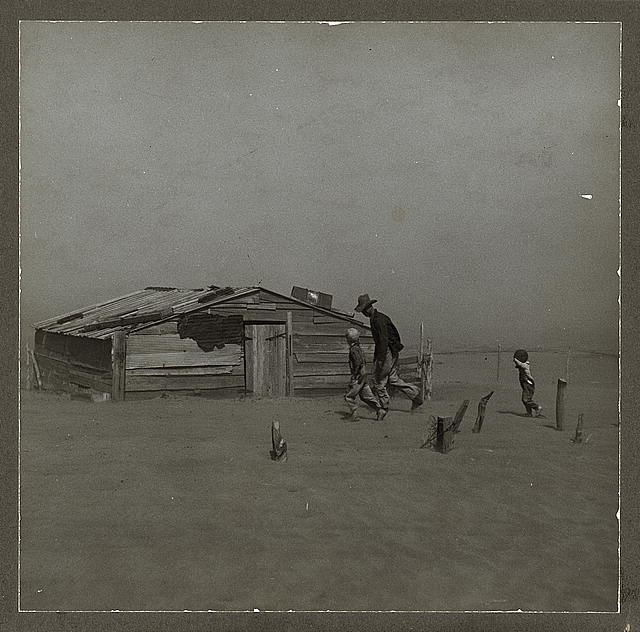We have much more to do and your continued support is needed now more than ever.
Lessons of the Dust Bowl
“We were too selfish and we were trying to make money. It didn’t work out.” – Dust Bowl Survivor quoted in Ken Burns’s documentary, The Dust Bowl
Wednesday night, I attended an early preview of Ken Burns’ documentary, The Dust Bowl, which will be airing on PBS November the 18th. Mr. Burns presented 6 clips from the film, followed by a panel discussion that also included Dust Bowl survivor Cal Crabill, National Geographic editor Peter Miller, and CBS news correspondent Jim Axelrod.
[youtube]http://www.youtube.com/watch?v=MYOmjQO_UMw[/youtube]
As a former student of soil science and the history of agriculture in America, I was more than passingly familiar with the story of the Dust Bowl as a cautionary tale of the consequences of the coincidence of human greed, government policy, and extreme climate conditions. As I know the story, a favorable market for crops, speculation from wealthy investors, and encouragement from the federal government led to a massive plow-up of land in the Midwest and Plains States during the 1930s. This was before modern soil conservation practices evolved, when people really believed that their activities would not harm the land.
“The soil is the one indestructible, immutable asset that the nation possesses. It is one resource that cannot be exhausted, that cannot be used up.” – Federal Bureau of Soils, 1909
We now know the above quote is not true. It is possible for humans to cause incredible, and even irreversible damage to our natural resources. The soil is resilient, but it is not indestructible.
Watching the film brought the human dimension of the Dust Bowl and its aftermath to life in my mind. I can’t imagine what it was like for people to sit in the dark in their own homes, covering their faces with flour sacks or pieces of cloth to keep from breathing in the dirt as black clouds of dust raced by just outside their walls. I can’t imagine the aftermath of poverty, when people’s lives were destroyed and their sources of income depleted, so that mothers went to extreme measures to find lost dimes to feed their children.

Right now, market conditions are encouraging farmers to plant fence row to fence row, breaking out new land in the Midwest and Plains and destroying what native grasslands remain. This past summer, one of the worst droughts in recent history created ideal conditions for dust storms. Indeed, yesterday, in Oklahoma, a dust storm caused “near blackout visibility” and a 30 car pile-up, resulting in injuries, damage to property, and the risk of human life.
It is crucial that our government policies do not encourage us to repeat past mistakes. That is why NWF has been fighting to get a national Sodsaver provision applied to the next Farm Bill. The Great Plains of the past that supported vast herds of buffalo and antelope are long gone, but our remaining grasslands are home to a wide array of wildlife, such as pheasants, prairie dogs, and songbirds. It is very important that we don’t lose what little grassland remains. We should remember the lessons of the Dust Bowl, and think not just about what could happen to wildlife, but also what could happen to human beings if we try to do too much on the land.
![]() Let Congress know that you want a national Sodsaver provision in the next Farm Bill. This is a small step we can take to make sure taxpayer dollars aren’t funding the same kind of activities that contributed to the Dust Bowl.
Let Congress know that you want a national Sodsaver provision in the next Farm Bill. This is a small step we can take to make sure taxpayer dollars aren’t funding the same kind of activities that contributed to the Dust Bowl.




















